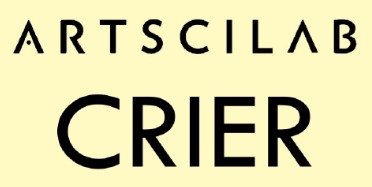Creative Disturbance is an international and multilingual podcast platform that facilitates collaboration between individuals in art, science, and technology communities. It was created in 2014 by the ArtSciLab of the School of Arts, Technology and Emerging Communication of UT Dallas, with the support of The MIT Press and Leonardo/ISAST. It is primarily run by UT Dallas students, with oversight and assistance from faculty.
Creative Disturbance is an international and multilingual podcast platform that facilitates collaboration between individuals in art, science, and technology communities. It was created in 2014 by the ArtSciLab of the School of Arts, Technology and Emerging Communication of UT Dallas, with the support of The MIT Press and Leonardo/ISAST. It is primarily run by UT Dallas students, with oversight and assistance from faculty.
Creative Disturbance has been made possible thanks to the success of a Kickstarter crowdfunding campaign and the generous contribution of donors. On December 8, 2014,133 backers pledged $21,511 to keep Creative Disturbance running. The podcasts are since then recorded and produced by individuals who have an interest in art, science, design, education or technology. As promised during the campaign, the funding generated through this initiative has served to award international grants to students and young professionals across the world (Canada, China, Columbia, Egypt, Kenya, Portugal, South Africa, Sweden, and Turkey so far). In return, the students have created a series of podcasts of their interests.
After four years of activity, Creative Disturbance has covered a wide range of topics such as the advancements of generative art and virtual reality, the ethics and aesthetics of artificial life art, the field of sonification, the meaning of Persian sculpture and mythology, the aesthetics of Chinese contemporary new media art, the dynamics of African diasporas and the Afrofuturist movement, the evolution of digital art in Latin America, the emergence of interactive architecture and synthetic biology, the impact of climate change in environmental art, the story of women engineering, the relationships between gender and economics, technology, race, and sexuality, etc. Today, more than 40 channels have been created by a network of local and international collaborators in the fields of art, science and technology. Creative Disturbance is 480 podcasts published in 16 languages listened in more than 145 countries for a total of 94,408 downloads. We intend to continue this effort by promoting multilinguism, trans disciplinarity and experimentation in the next phases of our development.










